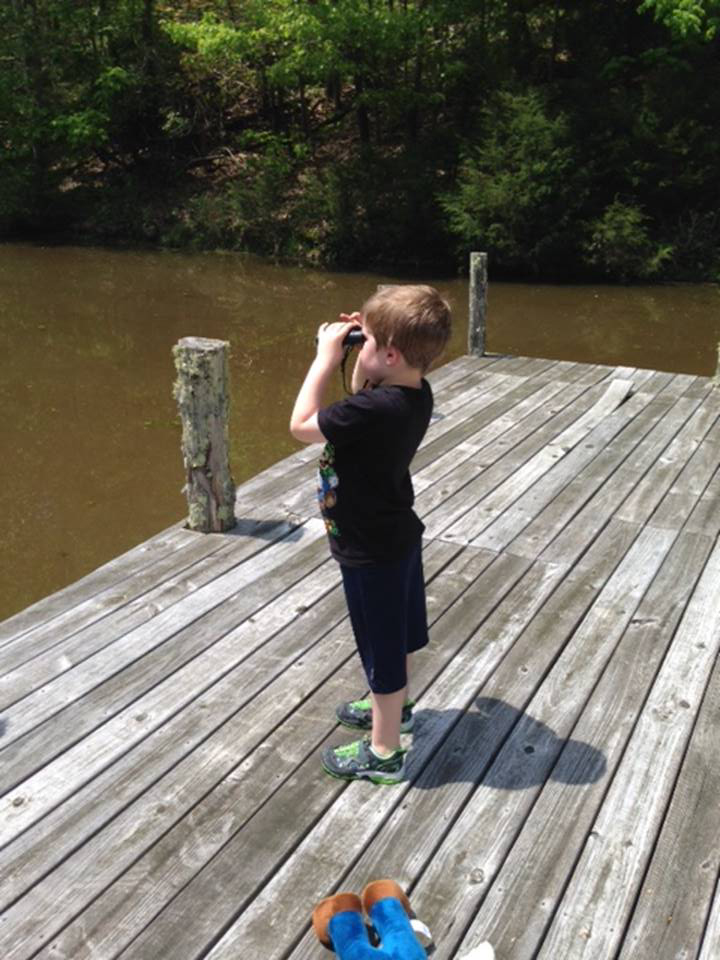“Let’s stop talking, so we can hear how quiet it is….”
That was my five-year-old grandson admonishing me and his twin brother as we stood at the edge of the woods near my pond a couple weeks ago. It was a beautiful spring day, and the forest was a cacophony of bird song, mingled with the hush of the breeze. The boys stood motionless and listened for just a few moments, their proud grandfather astonished that they would even think of such a thing.

Less than a week later, I found myself standing at the boundary of a mature forest, where it met the edge of a young stand of pine. The sun glistened from the damp tangle of ground cover amongst the pine, while the dense canopy of the mature stand kept its interior dark and still, typical of the incredibly lush forests of eastern North Carolina.
“Let’s listen for a minute…”
This time it wasn’t my grandson, but a biologist with the American Bird Conservancy (ABC). He was addressing a group of foresters, biologists and conservationists assembled to learn something a little different about the values of managed forests.
We listened… and then we learned.
Within a few minutes, one of these experts had identified no fewer than 26 species of birds, just from their calls. From the young pines, we heard prairie warblers and indigo bunting. From the mature forest, we heard wood thrush and hooded warblers, all living in this managed forest landscape.

ABC is working with several SFI Program Participants including Weyerhaeuser, Enviva, Resource Management Service, LLC, Hancock Timber Resource Group, and Georgia Pacific, to better understand the habitat value of managed forest landscapes. The work is focused in several key landscapes across millions of acres in the Unites States, where managed forests provide critical habitat for bird migration, breeding, and foraging.
Our field visit was punctuated by frequent discussions between the foresters and the biologists about stand history, management practices, and the important mix of conditions on the landscape that are necessary for birds to thrive. Young forests, labelled early successional habitat by biologists, are one forest condition well‑served by managed forests, and important to bird species like prairie warbler and yellow‑breasted chat. But older managed forests are also critical, and well-used by species like worm‑eating warblers and northern parula.
We were also reminded of the broader values of these forests as we tramped through a grove of recently flooded bottomland hardwood and found the very fresh footprint of a black bear. The expanse of managed forests in this region ensures clean water and flood mitigation for millions of people downstream and habitat for black bear and other wide-ranging species, like the yellow-bellied cuckoo.
For over 20 years, SFI has stood at the juncture of sustainable forests, thriving communities and responsible supply chains. Ensuring quality wildlife habitat has always been an important element of this work, but may be more important now than ever, as increasing rates of development have resulted in loss of habitat and subsequent decline in many bird populations. Managed forests play a vital role in providing habitat at a scale that supports birds and many other animals.
As we walked along an old logging road through the stand of young pine, EJ Williams, ABC’s Vice President of Migratory Birds and Habitat, stopped and pointed. A tiny bird was repeatedly swooping in deep arcs down into, and back out of, the brush along the road. It was a male ruby-throated hummingbird, conducting its mating ritual — a rare treat for us to witness. We were close enough to hear the hum of its wings on each pass… but we had to listen.
For more information about SFI’s conservation work, please email Paul Trianosky, Chief Conservation Officer at SFI.
